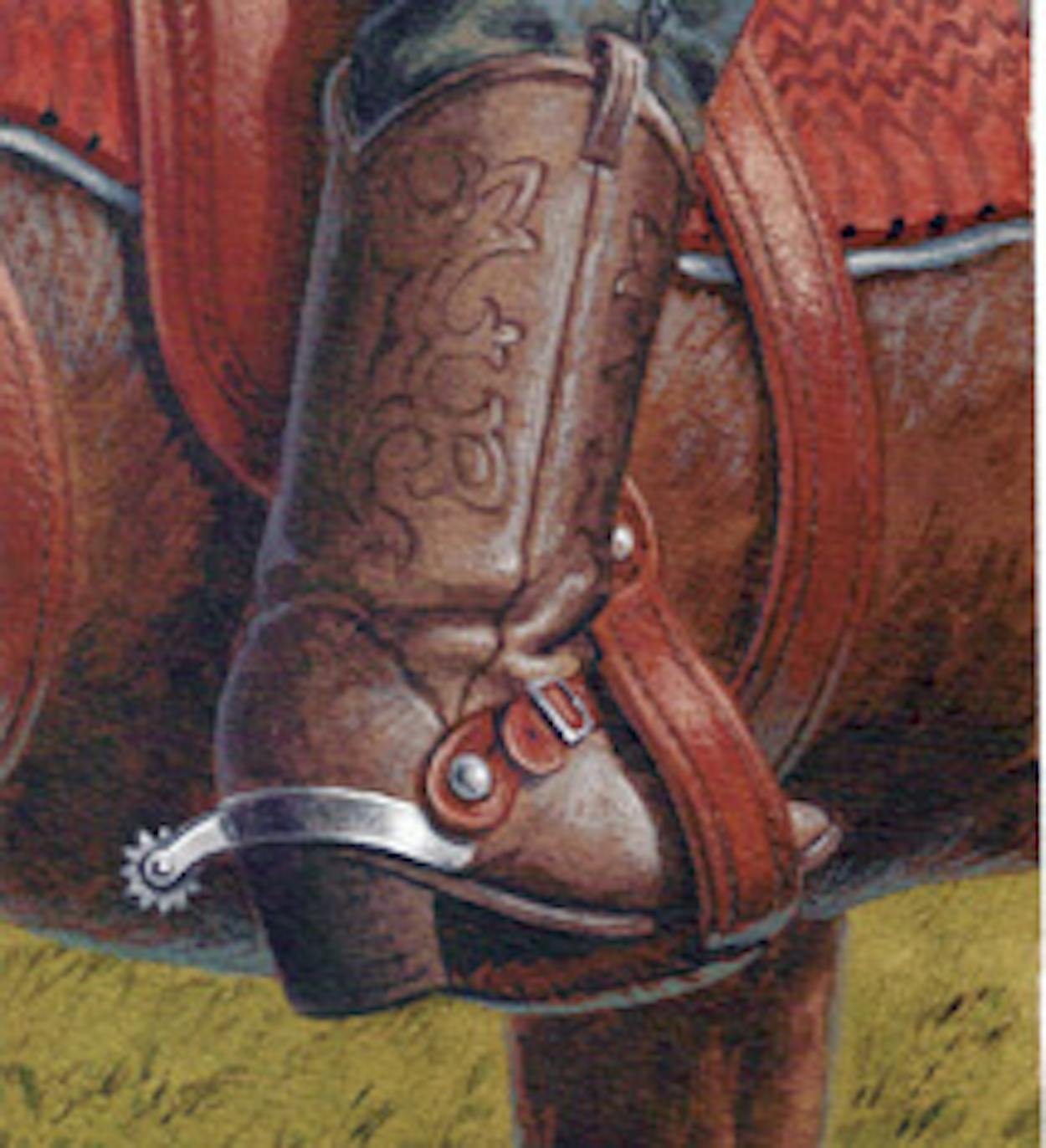Any rodeo fan can don a Stetson, Wranglers, and a pair of Tony Lamas, but the cowboys in the arena are the ones who wear the spurs. “It’s like a knight in his armor,” says Joe Spiller, who’s been handcrafting them for 27 years and owns Spiller Spurs and Bits, in Wingate. The jangling accessories started out as a utilitarian training tool—riders use them to give movement cues to an animal by applying pressure to its sides—but they have also become a sort of social statement. “People wear them to personalize an outfit,” Spiller says, and the design you choose should reflect their purpose. Working cowboys prefer simplicity, while ranch owners signal their clout with elaborate scrolling. But no matter who you are, be courteous and slip them off before entering someone’s home.
THE FIT
Each spur comes with spur straps. Button one end of the strap onto the hanger’s hinge, a round piece of metal on either end of the heel band. With the hinges pointing up, place the spur on the spur ledge, which is the protruding edge of a boot heel. Pull the strap around the vamp, or front of the boot, and button the strap onto the opposite hinge. Tighten the buckle.
THE PARTS
A spur has three components: the heel band, the shank, and the rowel. As its name suggests, the heel band, a U-shaped piece of metal, wraps around the boot’s heel. Extending from the middle of the heel band is the shank. “The taller the person, the longer the shank needs to be to accommodate the position of his leg in relation to the animal,” Spiller says. The rowel, a rotating disk with blunt points, is attached to the shank tip. A rowel with fewer points is more severe, because less surface area touches the animal.
THE FLAIR
“Every aspect of a spur can be customized,” Spiller says, including the metal, which can be carbon steel (traditional), iron (heavy), aluminum (light), or stainless steel (shiny). Customers ask him to engrave initials or intricate illustrations into heel bands; design “gal legs,” shanks that look like a lady’s leg; or stylize the rowels by increasing their diameter and number of points. You can also shine them to a high gloss or let a natural patina develop. “All I ask,” says Spiller, whose custom creations range from $1,500 to $5,000, “is that you wash off the mud and poop.”








